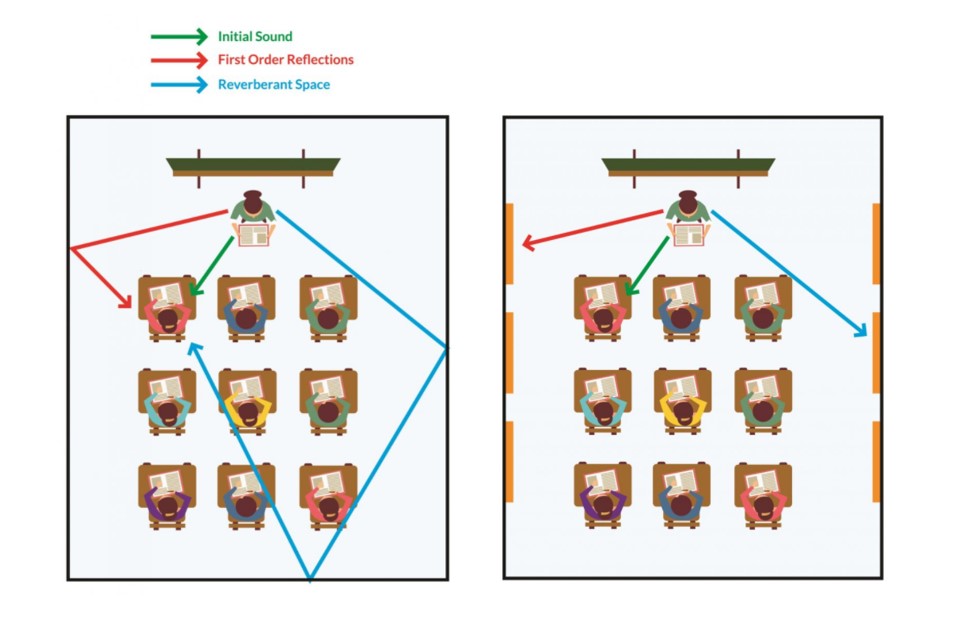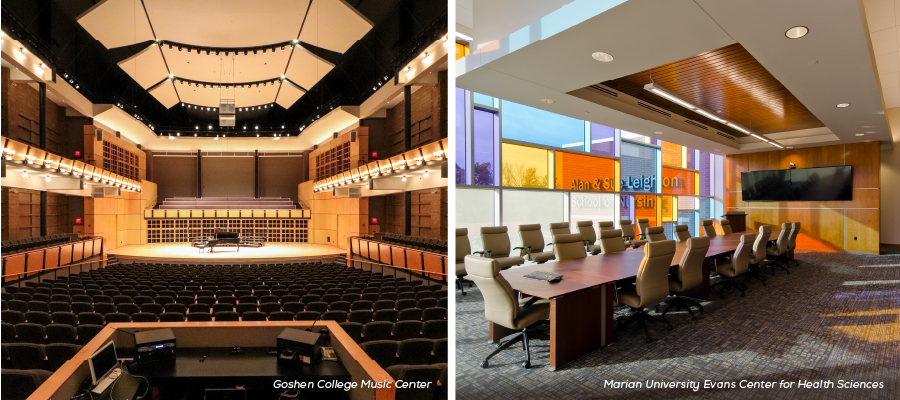The Intersection of Comfort and Sound: How Quiet HVAC Systems and Good Acoustics Contribute to Higher Learning
-
Category
Studio-Higher Ed, Innovation -
Posted By
Steve Alspaugh -
Posted On
Sep 22, 2021
Acoustics and Well-being
Well-designed classrooms are central to learning. While students and staff may not immediately consider what they hear (or don’t hear), noise control is fundamental to their learning environment. As architects and engineers specializing in higher education design, we have an obligation to minimize these distractions, making acoustics an integral aspect of design and partnering with acousticians. We also must understand the relationship between effective HVAC design and room acoustics. Both contribute to better outcomes and overall well-being.
While applicable to everyone, excellent acoustics are critical to students who are easily distracted, students with mild hearing impairments, talkers with more challenging speech clarity, English as a second language students, and soft talkers.

Without good acoustical planning, reflection and reverberation can inhibit learning
The Way Sound Moves
Because sound is not seen, most people do not understand its movement or how it imposes where it is unwanted. Sound goes everywhere, and key to a good design is an architect and acoustical designer who will always consider sound is like water. It finds the path of least resistance to make an escape to or from adjacent spaces. When considering best practices for student learning, this means controlling and containing background noise that emanates from HVAC equipment, duct leaks, electrical outlet placement, plumbing water and the relationship of loud adjacent spaces like corridors, and nearby music rooms. Without good planning, these conditions are distracting to the learning process and will mask speech clarity.
The Three-Legged Stool
If thoughtfully designed, good acoustics can be built into educational spaces from day one—resulting in high performance. Acoustics can be optimized by thinking about them as a three-legged stool.
1) HVAC Noise Criteria (NC)
- Consider how noisy system elements will be–are they distracting?
- Take care to reduce vibration, control air speed, and minimize holes or gaps.
2) Sound Transmission Class (STC)
- Consider how effective built barriers are to capture and contain sound.
- Design to block exterior and interior noise producers such as traffic, students, and equipment.
- Consider exterior and interior surface material, and all points of penetration. Examples include roofs, windows, ceilings, walls door gaps, and insulation.
3) Room Reflections (RT60)
- Design specifically for the room’s purpose. For instance, a speech in a classroom requires something different than a music room.
- To enhance reflectivity, use hard surfaces or reduce by using soft materials.
- Consider adding flexibility through movable surfaces like curtains over mirrors.

Different types of spaces benefit from different acoustic considerations
“Minimum Guidelines for Classrooms” ANSI Standard S12.60
According to the Acoustical Society of America, every day, thousands of students across the country are missing more than 25-30% and up to 50% of what is being said in class. This further emphasizes the need to budget for better acoustics within your building strategy.
Advice for Owners
On college campuses, properly engineered HVAC systems and acoustics go hand in hand. Incorporating best acoustics practices for speech and learning is a smart business decision that assures your students get the most from their educational experiences and investment. Working with reputable architects and acoustical engineers can alleviate any guesswork while controlling the budget and contributing to campus success.
* David Wright, ASA, of IMEG Corporation contributed to this post.







